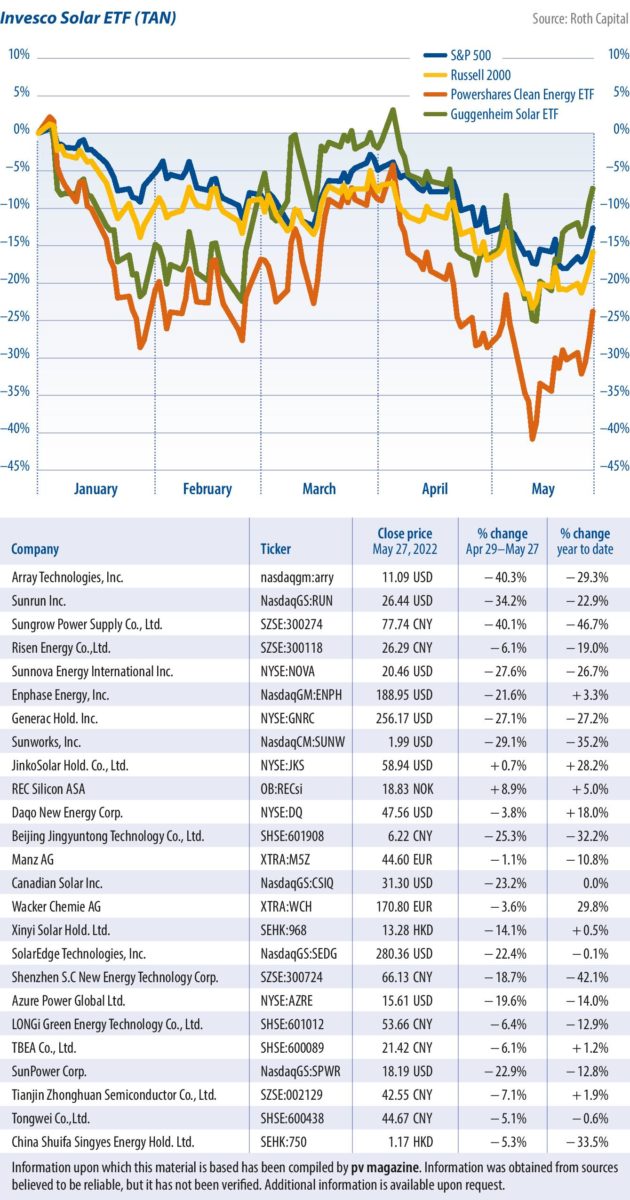The top five performing solar stocks in the US market include Array Technologies (69.8%), Sunrun. (32.3%), Sunnova Energy International (18.5%), Enphase Energy (17.1%), and Generac Holdings (16.8%).
Utility-scale players in the US are still trying to figure things out. Some module vendors are willing to take on the tariff risk, but are trying to charge $0.55/W to $0.60/W, including domestic freight for Q3 delivery. Others want to charge a floating price. In other cases, contracts are being done with rebates/refunds/escrows stipulated based on the outcome of the case. As for residential, pricing remains up 15% to 20% vs. pre-anti-circumvention levels at $0.60/W to $0.70/W and is likely to remain stable going forward.
As for US manufacturing, our checks suggest there may be as much as 16 GW to 18 GW of module capacity in queue for the Department of Energy loan guarantee program. It is not clear how much cell capacity is in the pipeline.
On May 12, we learned that delays of polysilicon capacity expansions due to lockdowns have had a minimal impact on pricing thus far. According to BJX, polysilicon manufacturers including GCL, Tongwei, and Xinte face delays on raw materials to construct new facilities, though current facilities are mostly under full utilization.
As of May 23, the industry continues to wait to see if the Biden administration can or will intervene in the Auxin case. The prevailing thinking on the anti-circumvention impacts is that utility scale is impacted much more meaningfully than residential solar. The large residential players such as NOVA and RUN have scale and access to product given their buying power. That said, we are trying to assess how much of the residential long tail could be impacted by limited module availability and the potential impacts to ENPH and SEDG.
By  Jesse Pichel
Jesse Pichel
This content is protected by copyright and may not be reused. If you want to cooperate with us and would like to reuse some of our content, please contact: editors@pv-magazine.com.
